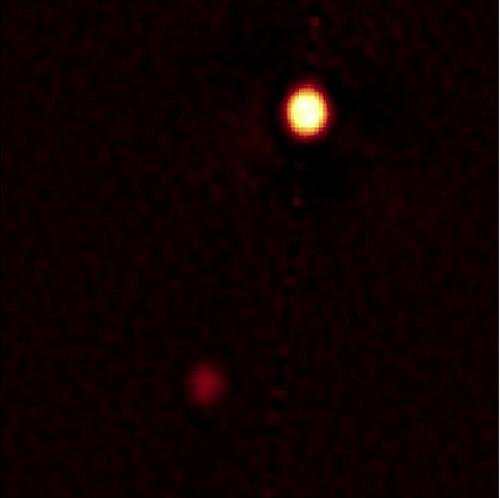Speckle image reconstruction of Pluto and Charon obtained in visible light with the Gemini North 8-meter telescope using the Differential Speckle Survey Instrument. This is the first speckle reconstructed image for Pluto and Charon from which astronomers obtained not only the separation and position angle for Charon, but also the diameters of the two bodies. Credit: Gemini Observatory/NSF/NASA/AURA
HILO, Hawaii, Sept. 27 (UPI) -- U.S. astronomers say they've captured the sharpest-ever ground-based images of the "demoted" dwarf planet Pluto and its moon Charon.
Astronomers at the Gemini Observatory in Hawaii used Pluto, no longer the solar system's ninth planet but rather reclassified as a dwarf planet, and its largest moon as a surrogate extrasolar planetary system to produce exceptionally high-resolution images with the observatory's 26-foot telescope using a method called reconstructive speckle imaging.
Gemini obtained a large number of very quick "snapshots" of Pluto and Charon that researchers reconstructed into a single image after subtracting the blurring effects and ever-changing speckled artifacts caused by turbulence in the atmosphere and other optical aberrations.
The resolution obtained in the observations corresponds to seeing the separation of a pair of automobile headlights in Providence, R.I., from San Francisco, astronomers said.
The images captured of Pluto and Charon in visible light hint at the exoplanet verification potential of a large state-of-the-art telescope when combined with speckle imaging techniques, they said.
NASA's Kepler space telescope, which has already proven a powerful exoplanet discovery tool, can benefit greatly from the speckle imaging technique as well, Steve Howell of the NASA Ames Research Center said.
"This is an enormous gain in the effort under way to confirm small Earth-size planets," Howell said in a Gemini Observatory release.















